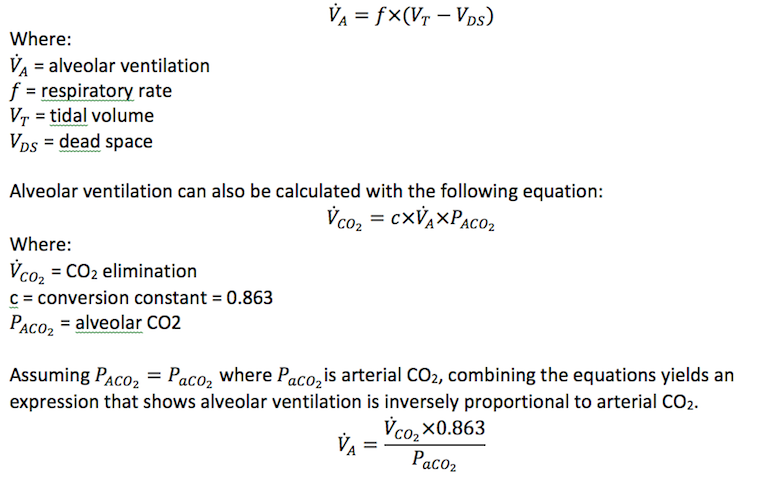Copy link
Relationship of alveolar vent to PaCO2
Last updated: 06/03/2016
Minute ventilation is determined by the product of tidal volume and respiratory rate. However, only a portion of what is inspired participates in gas exchange at the level of the alveoli and respiratory bronchioles and the rest remains as dead space. Therefore, alveolar ventilation, not minute ventilation, ultimately determines the elimination of CO2 and thus PaCO2. Changes in dead space, whether anatomic or physiologic, require changes in alveolar ventilation in order to maintain a constant PaCO2. This may be observed in patients with conditions that increase dead space such as obstructive lung disease. With an increase in dead space, an increase in alveolar ventilation via hyperventilation is required to maintain PaCO2. When the degree of hyperventilation is not enough to compensate, the patient’s PaCO2 will rise. Mathematically, this is expressed below.
Relationship is best defined by the equation:
PaCO2= k x VCO2 / VA,
Where k: unit correction constant of 0.863
VCO2: Production of CO2
VA: Alveolar ventilation
Hypercapnia is usually caused when alveolar ventilation is low. For patients that are already hypercarbic at baseline, drops in their alveolar ventilation will cause much higher changes in PaCO2.

Other References
- PACO2 Equation (Refer for graphical relationship) Link
Copyright Information

This work is licensed under a Creative Commons Attribution-NonCommercial-NoDerivatives 4.0 International License.